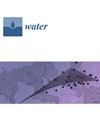基于多源地理空间数据的乌干达小水电评价
IF 3
3区 环境科学与生态学
Q2 ENVIRONMENTAL SCIENCES
引用次数: 0
摘要
本文基于作者编制的基于网络的水电地图HYPOSO的免费数据。这里使用免费提供的地理空间数据集,只强调了乌干达的河网和相关的水电潜力。主要目标是评估乌干达河流和溪流的水力发电潜力,将其与以前的评估进行比较,并确定安装小型水力发电厂的潜在地点。地理信息系统技术被广泛用于分析水文和其他相关的地理空间数据。根据河道坡度、支流之间的长度以及从特定径流分布图中得出的平均流量来确定河段的发电潜力。根据之前的评估,对从河网数字高程模型中提取的河流剖面进行了验证。乌干达的水电潜力是以各种模式确定的,其价值与先前的估计值进行了比较。考虑到一系列特征,该国确定了大约500个潜在的高能强度河段和新的小型水电站开发潜力区。对统计数据集进行了分析,并简要介绍了这些数据集。水电潜力的这些概括特征对于决策者促进我国水电发展是必要的。本文章由计算机程序翻译,如有差异,请以英文原文为准。
Small Hydropower Assessment of Uganda Based on Multisource Geospatial Data
This article is based on the freely available data of the web-based hydropower map HYPOSO, which the authors compiled. Only the Ugandan river network and associated hydropower potential are highlighted here, using freely available geospatial datasets. The main objective was to assess Ugandan river and stream hydropower potential, compare it with previous assessments, and identify potential sites for small hydropower plant installation. GIS techniques were extensively used to analyse hydrological and other related geospatial data. The stream-reach power potential was determined based on channel slope, the length between tributaries, and the average flow derived from a specific runoff distribution map. Stream profiles extracted from the river network’s digital elevation model were validated against previous assessments. Uganda’s hydropower potential was determined in various patterns, and its values were compared with prior estimates. Around 500 potential high-energy intensity stream reaches and new potential areas for small hydropower plant development were identified in this country, considering a range of characteristics. Statistical datasets were analysed, and their straightforward summaries were presented. These summary characteristics of hydropower potential are necessary for decision-makers to foster hydropower development in this country.
求助全文
通过发布文献求助,成功后即可免费获取论文全文。
去求助
来源期刊

Water
WATER RESOURCES-
CiteScore
5.80
自引率
14.70%
发文量
3491
审稿时长
19.85 days
期刊介绍:
Water (ISSN 2073-4441) is an international and cross-disciplinary scholarly journal covering all aspects of water including water science and technology, and the hydrology, ecology and management of water resources. It publishes regular research papers, critical reviews and short communications, and there is no restriction on the length of the papers. Our aim is to encourage scientists to publish their experimental and theoretical research in as much detail as possible. Full experimental and/or methodical details must be provided for research articles. Computed data or files regarding the full details of the experimental procedure, if unable to be published in a normal way, can be deposited as supplementary material.
 求助内容:
求助内容: 应助结果提醒方式:
应助结果提醒方式:


